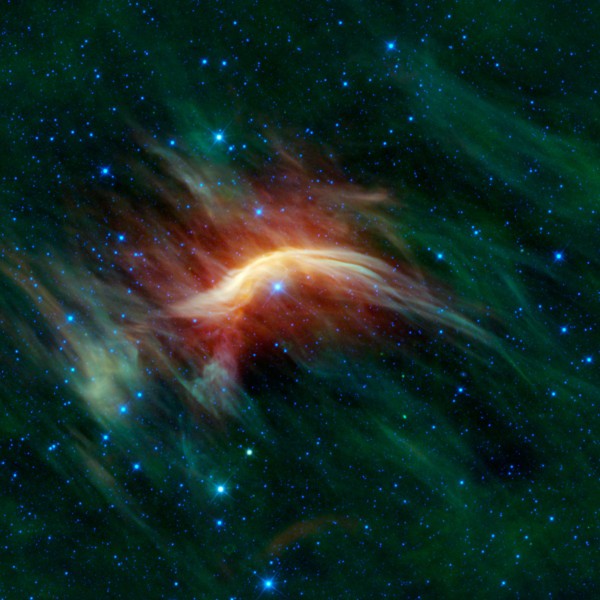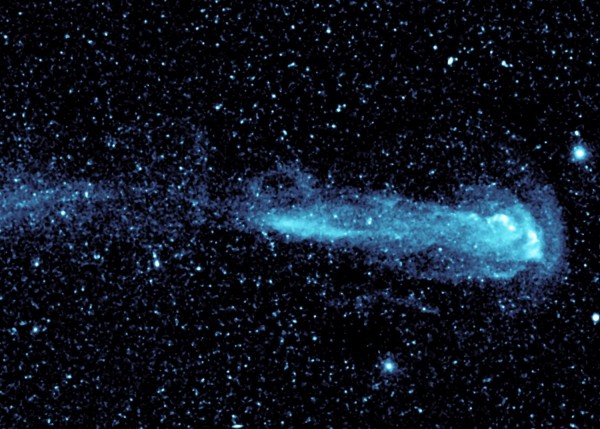"Most people don't know what's happening around them because they're just speeding through life. And before they know it, they're just old. So I just try to slow it down." -Tracy Morgan
Travel fast enough through the air, and you'll exceed the speed of sound. The compressed air in front of you builds up, denser and denser, creating a shock wherever you've exceeded the sound barrier. In interstellar space, stars that move fast enough do the exact same thing.
There doesn't need to be sound in space for runaway stars to compress gas, heating it and causing it to radiate. Our infrared space telescopes, like NASA's Spitzer and WISE, are ideal for identifying and imaging these stellar bow shocks. Hundreds have been identified so far, with thousands to millions likely in every galaxy overall.
 Image credit: NASA/JPL-Caltech/UCLA, WISE spacecraft, via http://www.jpl.nasa.gov/spaceimages/details.php?id=PIA13455.
Image credit: NASA/JPL-Caltech/UCLA, WISE spacecraft, via http://www.jpl.nasa.gov/spaceimages/details.php?id=PIA13455.
Go get the whole story in pictures and no more than 200 words on today's Mostly Mute Monday!


What a great photo (1st one); three examples of shock waves in the one. Lagging LL Orionis is a secondary, then to the top and right is the third.
PJ, is there a way to compare the the relative speed of suns/gas-cloud to earth/vapor clouds?
I don't know that a comparison would be appropriate since these stars are plowing their way through gas & clouds, whereas earth is carrying vapor clouds (atmosphere) with its gravity.